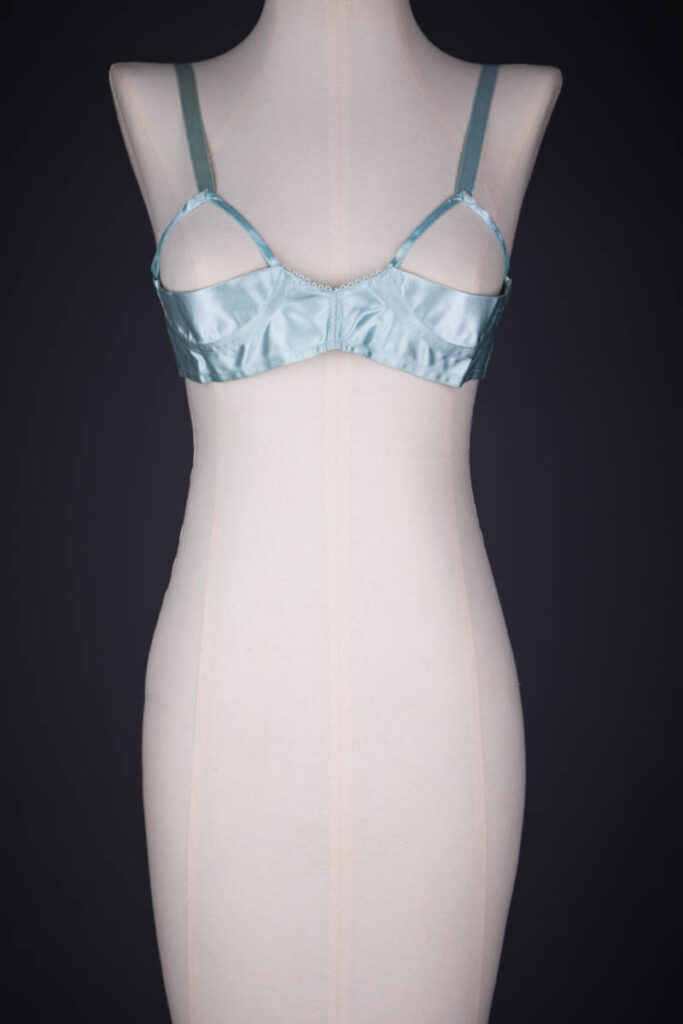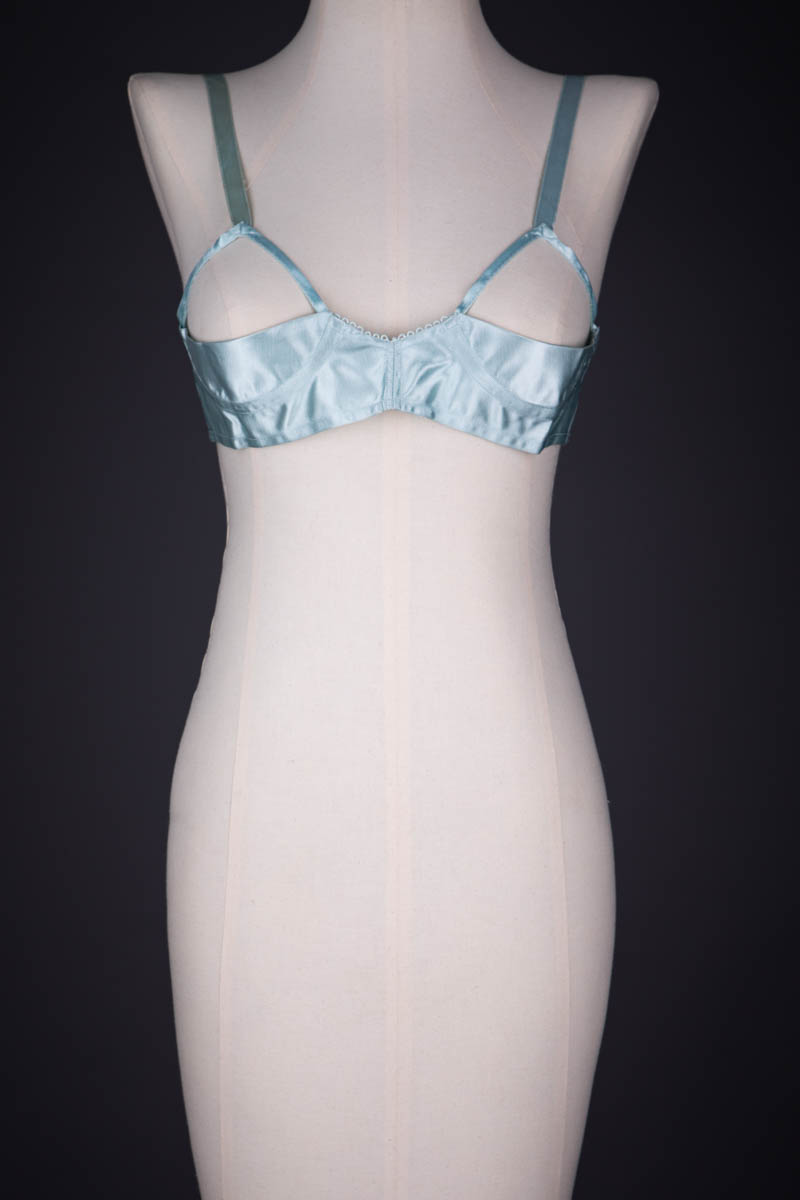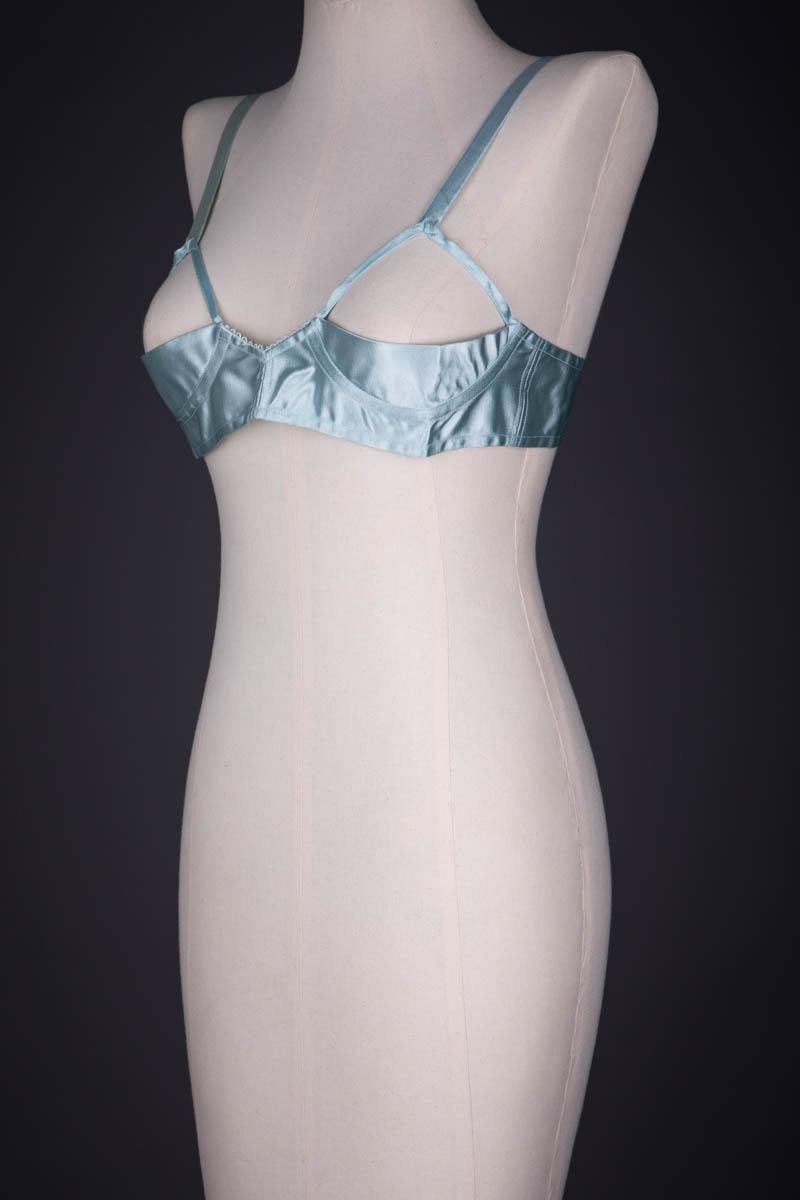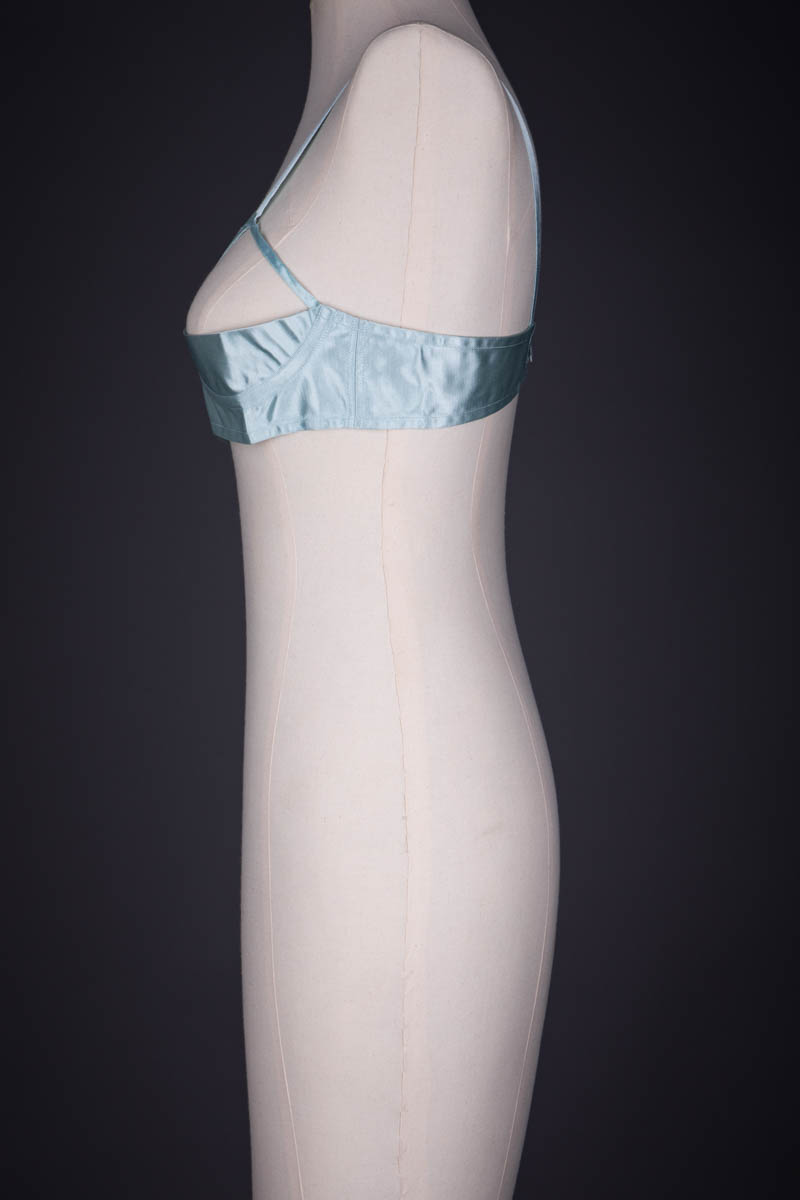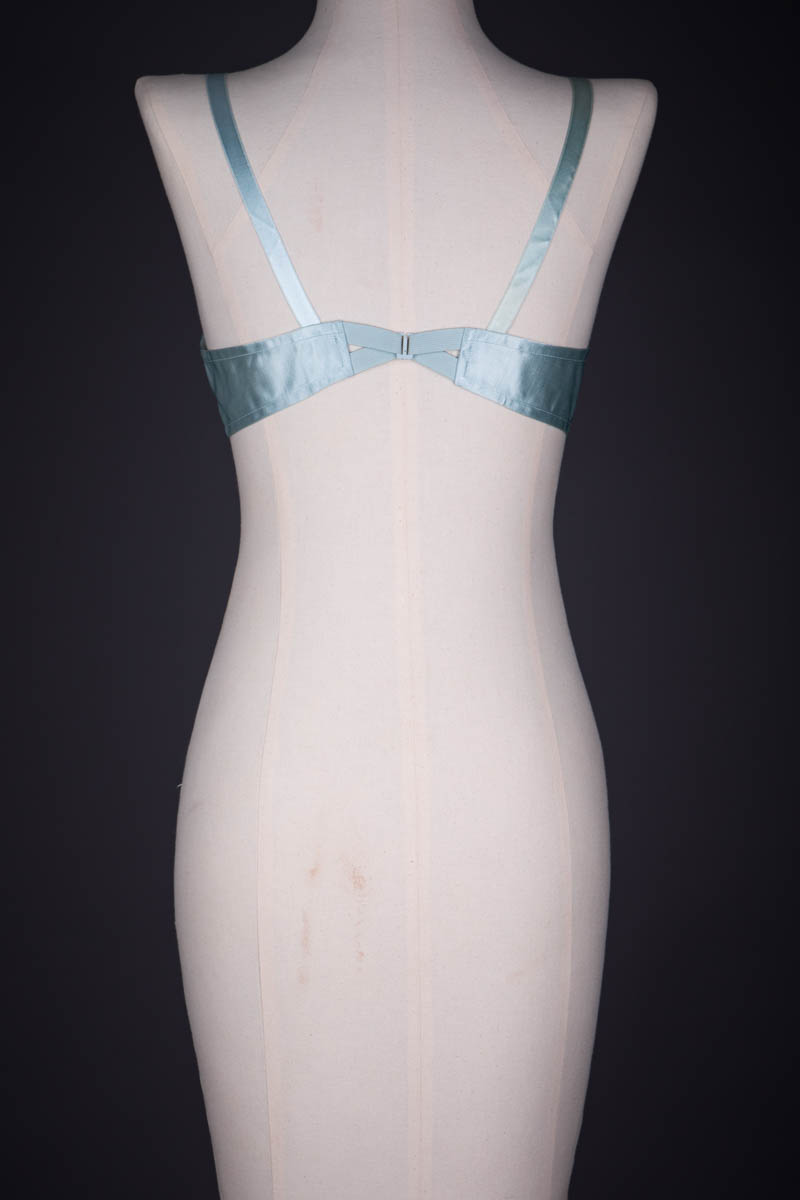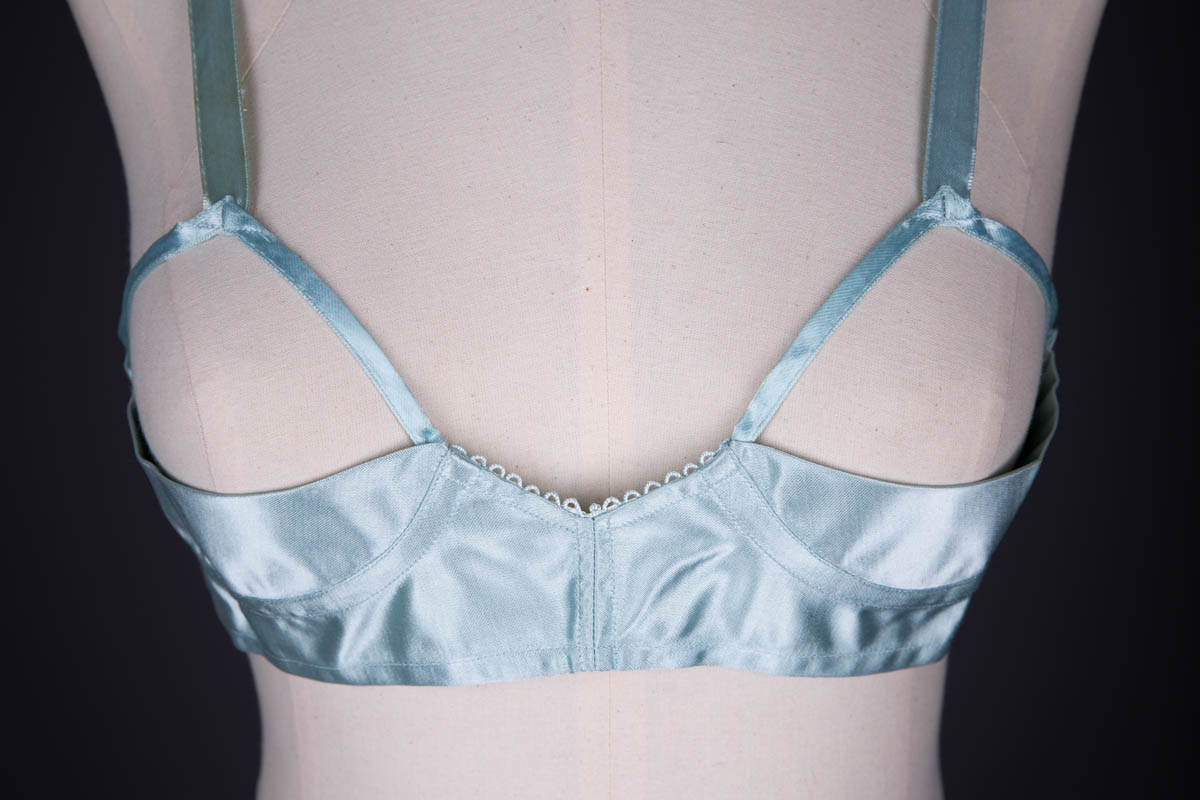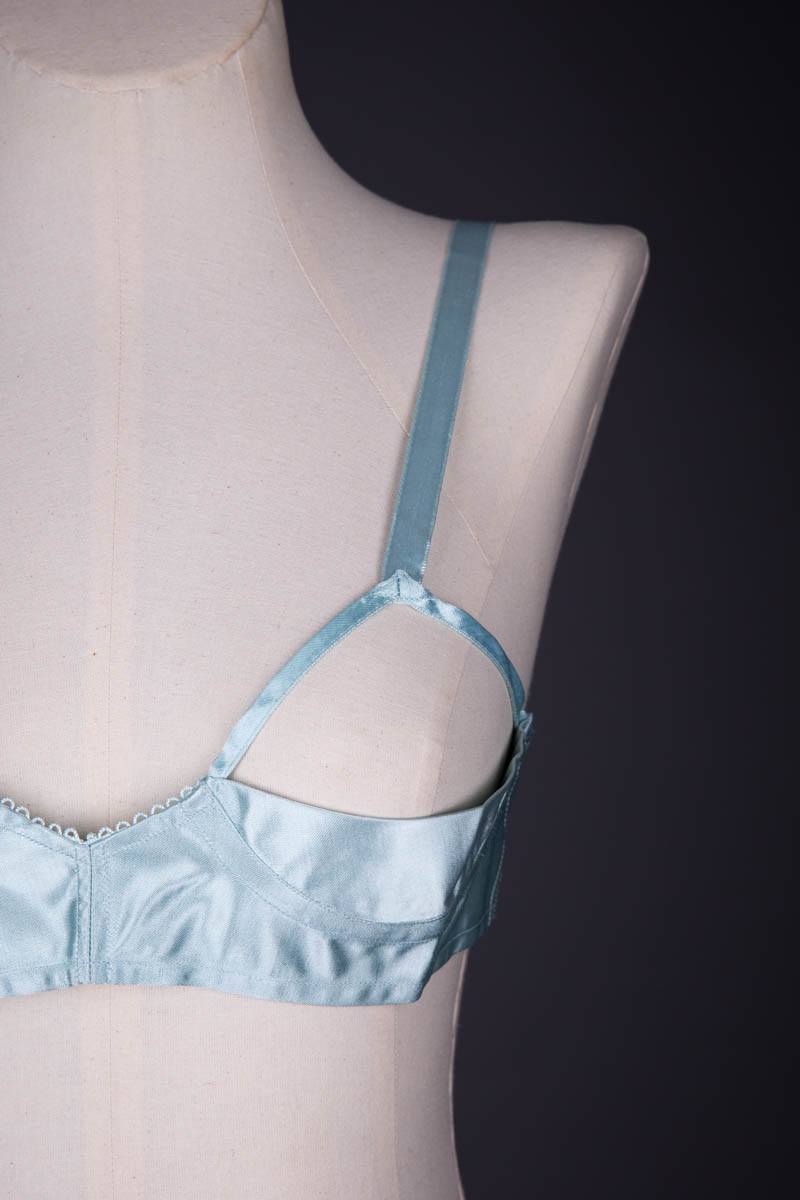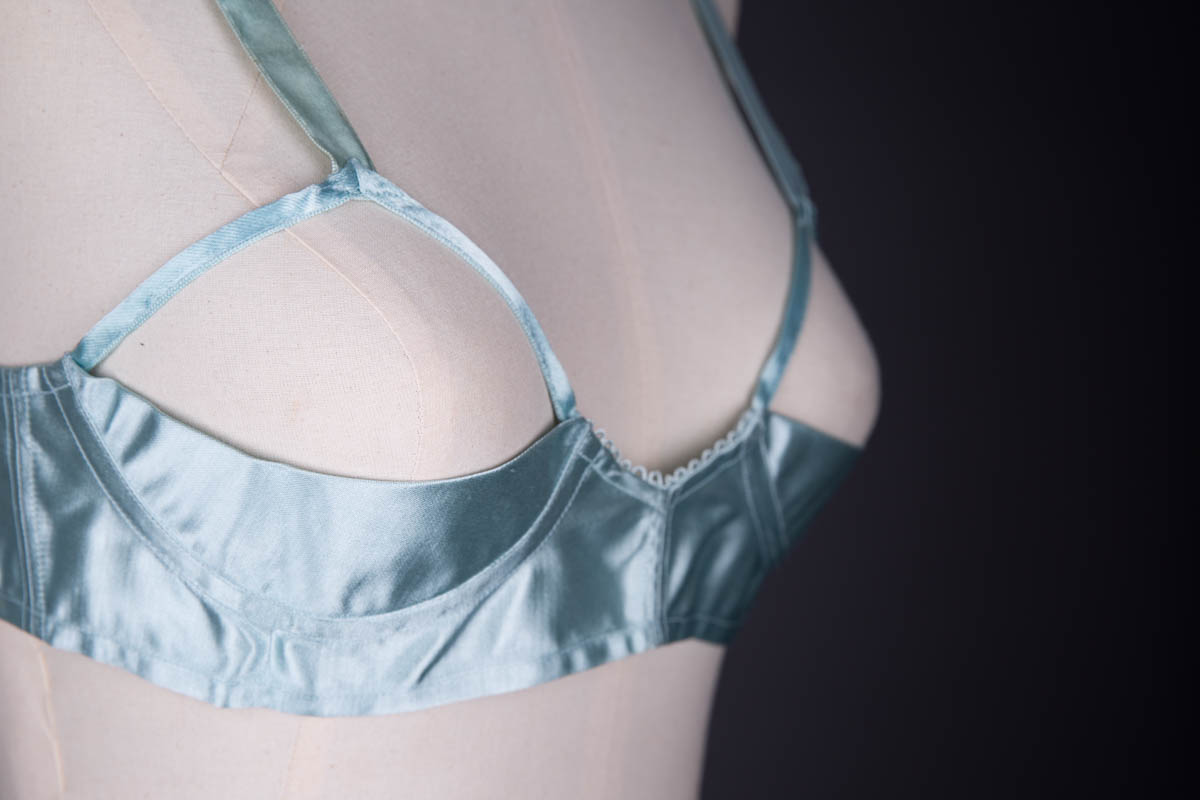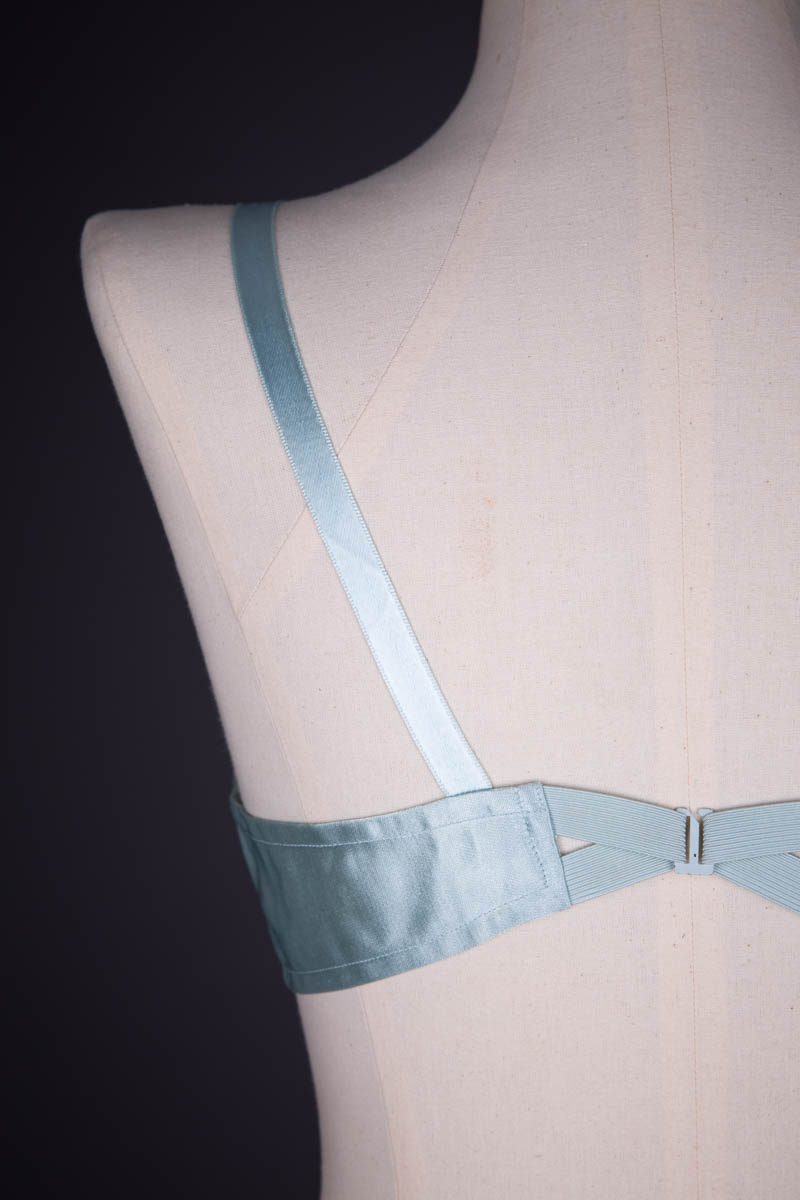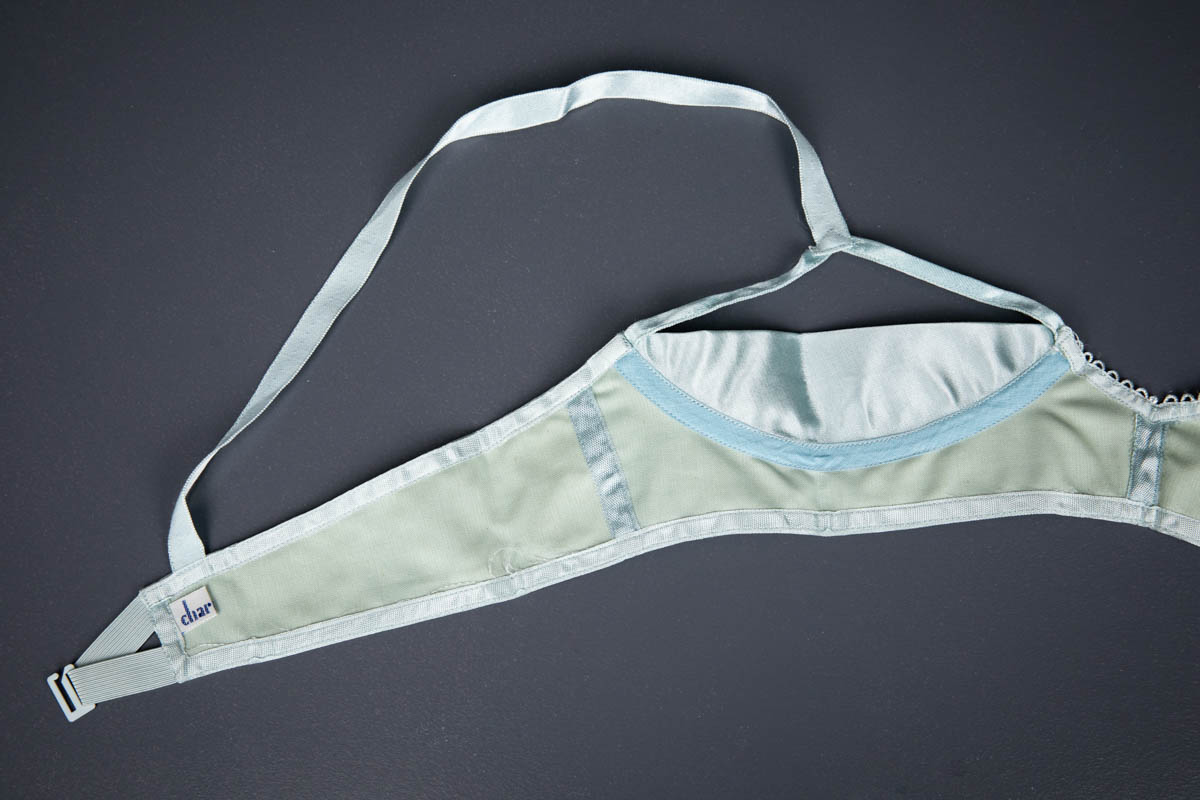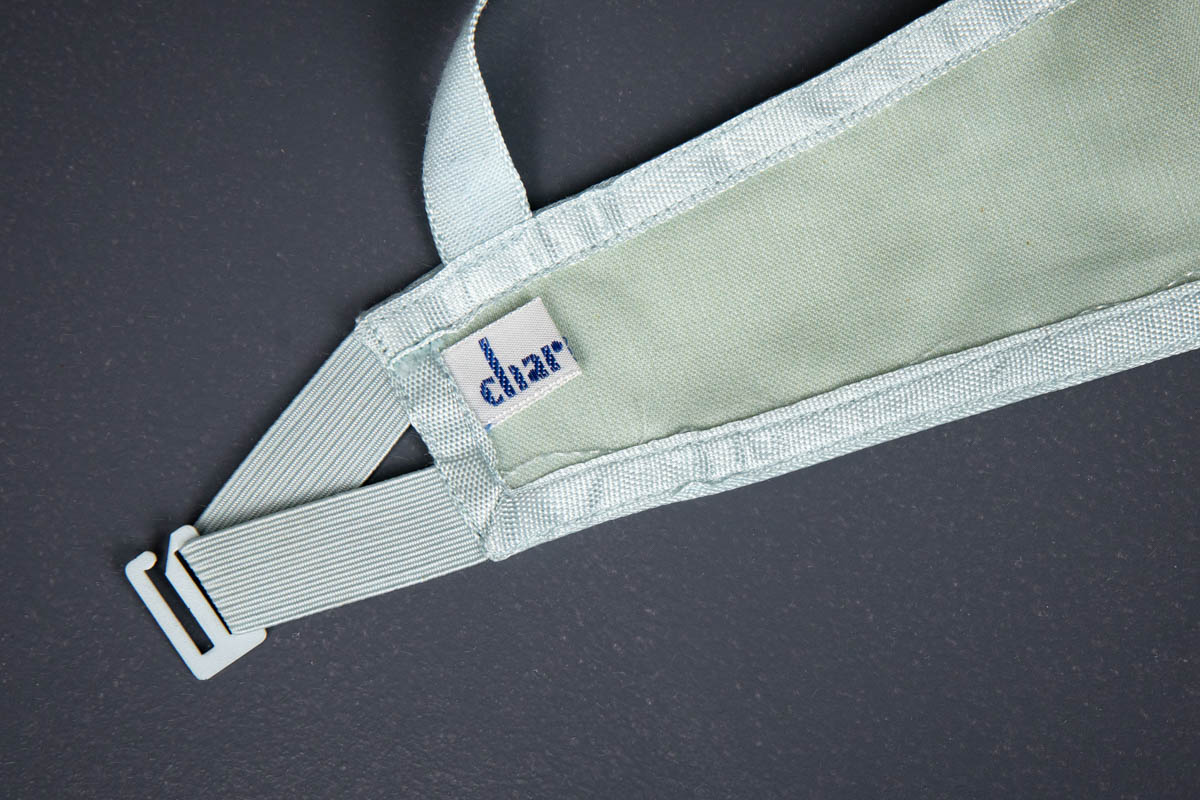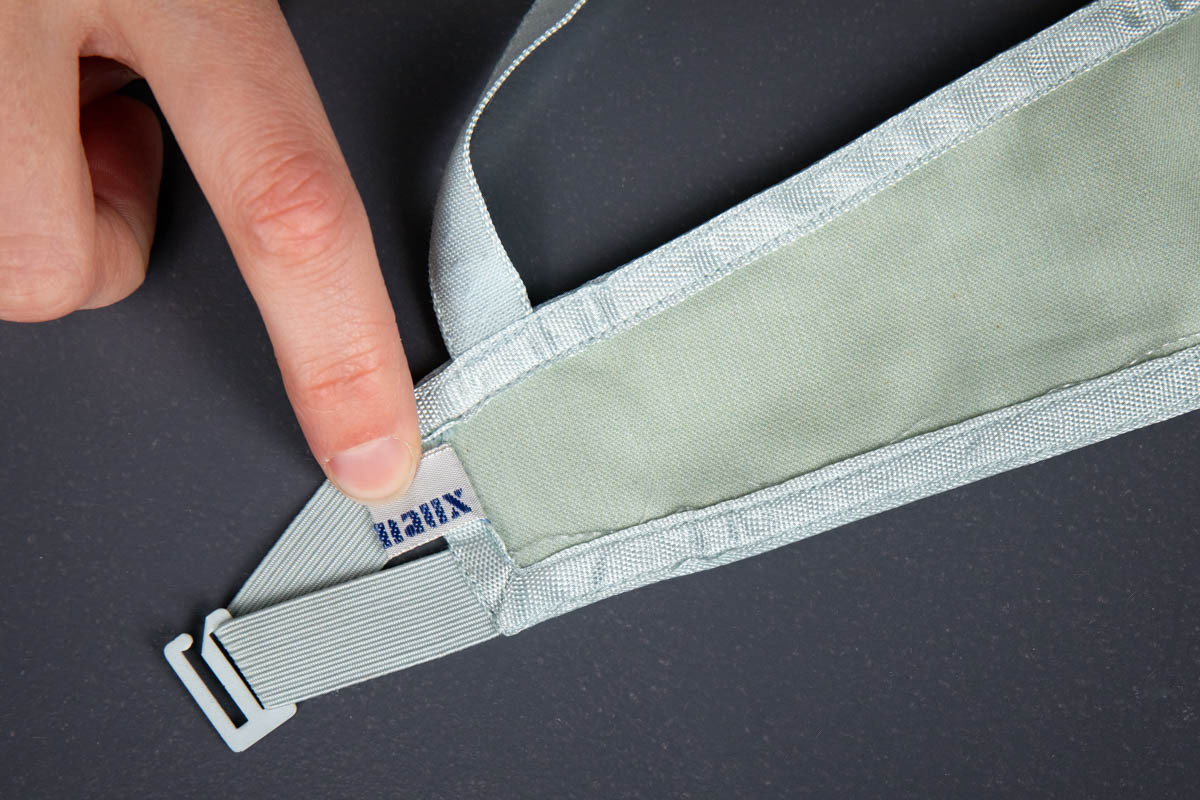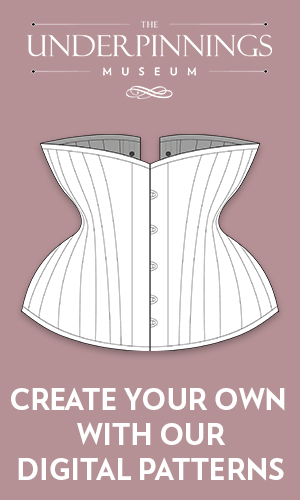Date: c. 1930s
Origin: Germany
Fabric: Rayon satin
Brand: Charnaux
This German-made sling bra, crafted in a pale blue rayon satin, was produced by the twentieth-century women’s undergarment manufacturer Charnaux. The barely-there cups of a sling bra offered a gentle lift to the breasts, while the exposed upper cup allowed the nipple to provide a gently pointed bust silhouette. After a decade of flattening the bosom, smooth bust lines became gradually replaced with shaped brassieres like this one. The lifted, and gently projected sling shape was fashionable through the 1930s, marking a significant departure from the boyish ideal of the 1920s.
Charnaux originated in Germany, opening its American branch in 1935 with Mrs. G. H. Greak was appointed as head designer and factory manager. At this time, the company was led by president R.G. Buddin, with C. Guy Stephenson serving as vice president, and managing director.
By 1936, Charanux operated locations in London, Paris, Vienna, Melbourne, and New York. Prominent New York retailers carrying Charnaux through the 1930s included B. Altman’s, Bonwit Tellers, Lord & Taylor’s, and Saks Fifth Avenue. The brand offered a wide range of products such as corsets, various styles of brassieres and girdles.
Around this time, a woman by the name of Mona Moray briefly joined the Charnaux Patent Corset Co. in New York as a stylist. In Women’s Wear Daily (WWD) she announced her “plans to travel through the East, arranging fashion shows and introducing the firm’s products.” Much of the brand’s advertising during the 1930s emphasized exclusivity and prestige, using language such as “Your better clientele will be asking for Charnaux,” and “Nationally advertised and internationally accepted,” positioning itself as being high quality and globally desirable.
The brand was known for its innovative use of the synthetic material “Anotex,” a textile derived from Latex/Lastex, which allowed for the creation of the supple, flexible corsets and brassieres. This was achieved through a perforated pattern over the surface of the garment. The brand’s designs attracted the attention of major couturiers: WWD reported in 1936 that Elsa Schiaparelli took various Charnaux foundation garments with her to Moscow when presenting her newest collection.
This style of bra continued to be manufactured as foundationwear into at least the 1960s, as shown by a Frederick’s of Hollywood model in the museum’s collection. While the sling shape persists in contemporary lingerie design, today it tends to be marketed more as erotic or boudoir wear rather than as a means for achieving a fashionable everyday silhouette.
From the collection of Karolina Laskowska.
Many thanks to Liv Elniski for the object description and research.
